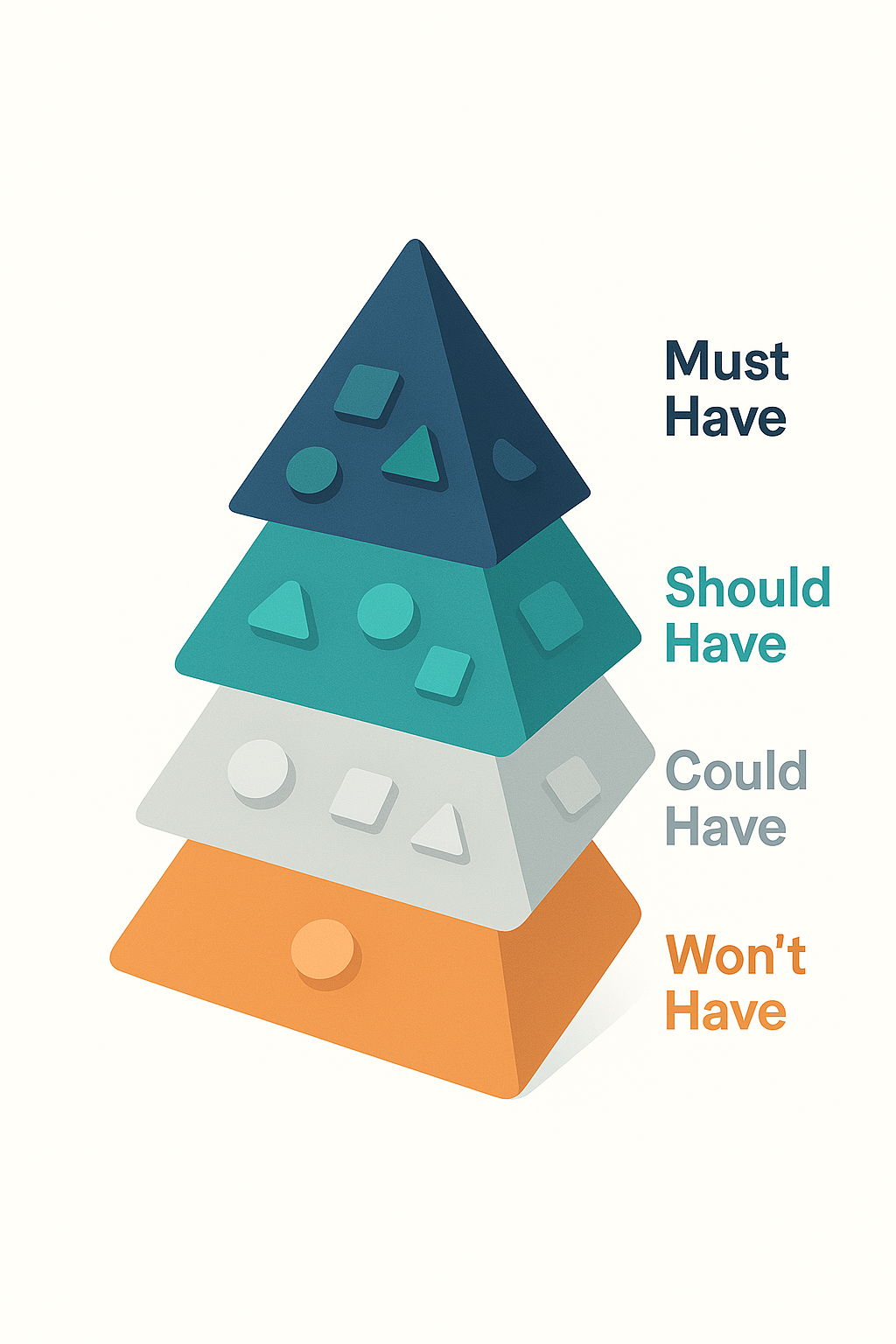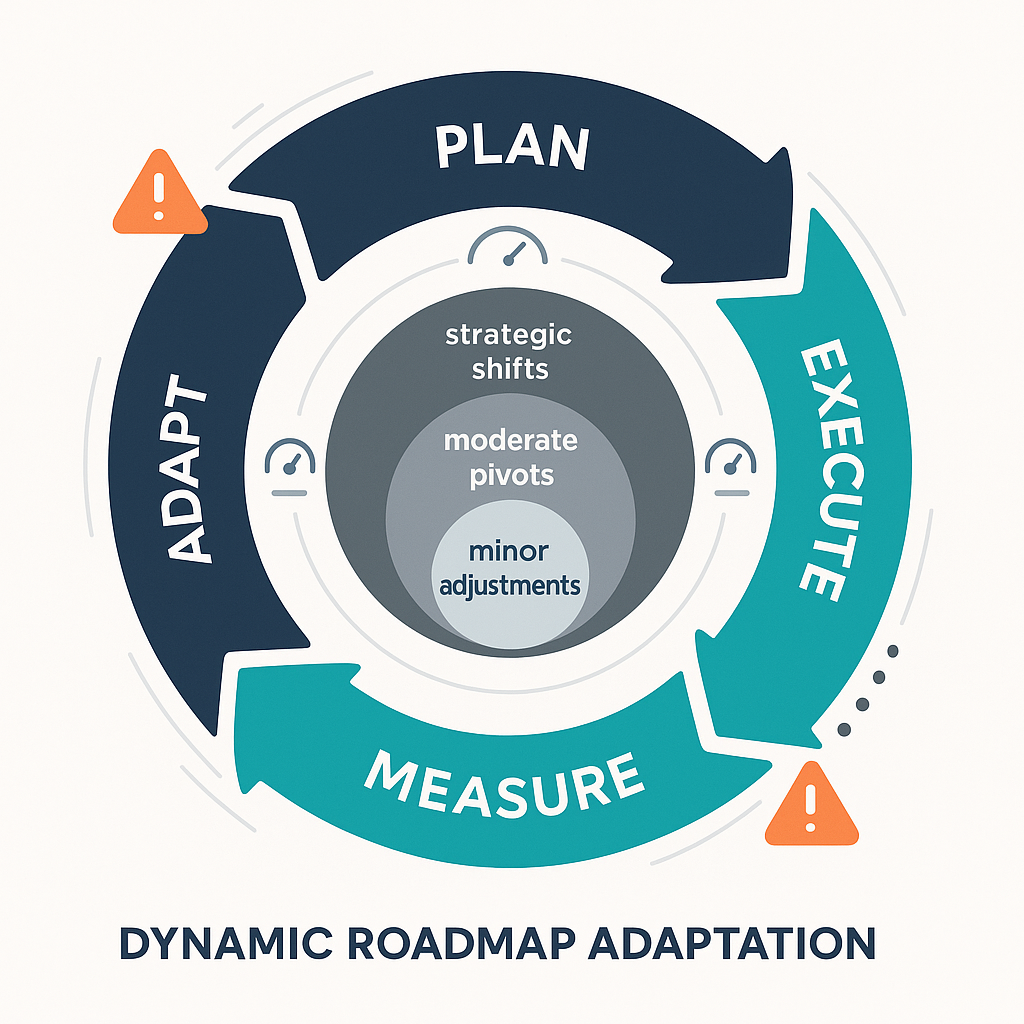Welcome to Execution, Prioritization, and Performance Delivery—a comprehensive journey that will transform how you approach product management through disciplined delivery practices. Throughout this course, you'll develop the essential skills that distinguish exceptional Product Managers from those who merely manage features. As you progress through each unit, you'll master the art of setting clear priorities amidst competing demands, learn to steer agile teams through complex execution challenges, measure what truly matters, and build a culture of continuous improvement that elevates your entire organization.
This course addresses one of the most critical challenges you face as a Product Manager: turning strategy into reality. While many can create compelling visions and identify market opportunities, the ability to execute consistently and deliver measurable results is what separates successful products from failed initiatives. You'll explore four interconnected dimensions of execution excellence throughout your learning journey.
First, you'll learn sophisticated prioritization and roadmapping techniques that help you navigate the constant tension between urgent requests and strategic initiatives. Next, you'll dive into agile delivery mastery, discovering how to coordinate cross-functional teams, break down complex work, and remove impediments that threaten your sprint goals. Following that, you'll master the science of measuring impact and making data-driven adaptations, ensuring your products deliver real value rather than vanity metrics. Finally, you'll establish continuous improvement loops that transform every setback into a learning opportunity and every success into a repeatable pattern.
What makes this course particularly exciting is its focus on real-world application. Rather than theoretical frameworks disconnected from daily challenges, you'll work with proven methodologies that address the messy realities of product management—technical debt, resource constraints, stakeholder conflicts, and market pressures. By the end of this course, you'll possess a complete toolkit for driving execution excellence, from quarterly planning sessions to daily stand-ups, from OKR setting to retrospective facilitation.
The MoSCoW method stands as one of your most powerful allies in the perpetual battle against scope creep and conflicting priorities. This framework—representing Must have, Should have, Could have, and Won't have—provides a structured language for negotiating priorities with stakeholders who each believe their request is the most critical. When your backlog contains dozens or even hundreds of items, MoSCoW transforms overwhelming complexity into manageable categories that everyone can understand and discuss objectively.

The true power of MoSCoW emerges when you apply it with disciplined criteria rather than emotional arguments. Your Must have items should represent genuine showstoppers—features without which the product literally cannot function or meet its core purpose. These might include regulatory compliance requirements that carry financial penalties, critical security fixes that expose customer data, or core functionality that defines your value proposition. The key is being ruthlessly honest about what truly constitutes a must-have versus what stakeholders simply want very badly. When a sales leader insists that "we absolutely must have this feature to close the Johnson account," your role is to probe whether this is truly a must-have for product viability or a should-have for revenue growth.
Moving down the priority ladder, Should have items represent important functionality that significantly enhances user experience or business value but won't cause immediate failure if delayed. These features often generate the most heated debates because they're genuinely valuable yet not absolutely critical. You might place competitive parity features here—capabilities your competitors offer that customers expect but can work around temporarily. The skill lies in helping stakeholders understand that should-have doesn't mean unimportant; it means the product can launch and provide value without it, even if the experience isn't optimal.
Your Could have category serves as the release valve for scope pressure, containing nice-to-have enhancements that you'll include if everything else is complete and you have remaining capacity. These might be UI polish, additional reporting options, or edge-case handling that affects a small user segment. Meanwhile, the Won't have category is equally important, explicitly documenting what you're not building to prevent scope creep and set clear expectations. When someone asks during sprint planning, having it documented as prevents reopening settled decisions.
Dependencies are the hidden killers of product delivery timelines, lurking beneath seemingly straightforward project plans until they surface at the worst possible moment. Your ability to identify, visualize, and manage these dependencies determines whether your roadmap represents an achievable plan or wishful thinking. Every feature you build exists within a complex web of technical, resource, and external dependencies that can either accelerate or derail your progress.
Technical dependencies form the foundation of your delivery challenges. When planning a new payment feature, you might discover it requires updates to three core services: the authentication system, the transaction processor, and the reporting engine. If these services are maintained by different teams with their own priorities and capacity constraints, what seemed like a two-sprint feature suddenly becomes a multi-quarter coordination challenge. The key is making these dependencies visible early through techniques like dependency matrices or network diagrams that show the critical path through your delivery pipeline. By mapping these relationships visually, you transform abstract risks into concrete planning considerations that your team can actively manage.
Equally complex are resource dependencies, particularly when specialized skills are required. Perhaps your machine learning feature requires the same data scientist who's committed to three other projects, or your infrastructure scaling initiative needs the platform team that's deep in a security audit. Visualizing these resource conflicts helps you spot bottlenecks before they impact delivery. Creating a simple grid showing which teams or individuals are needed for each initiative and when quickly reveals where you're double-booking critical resources or creating impossible workloads. This visibility enables proactive conversations about trade-offs and prioritization before crunch time arrives.
External dependencies often prove the most frustrating because they're outside your direct control. These might include third-party API integrations waiting for vendor updates, legal reviews that take unpredictable time, or marketing campaigns that must align with product launches. When you map these dependencies visually, patterns emerge that inform better planning. You might discover that scheduling legal reviews in parallel rather than sequentially saves weeks, or that certain vendor dependencies consistently run late and require buffer time.

The art of dependency management isn't just identification—it's active mitigation. Once you've visualized dependencies, you can employ strategies like parallelization, where independent work streams proceed simultaneously, or decoupling, where you build interfaces that allow teams to work independently. You might implement feature flags that let you ship code without activating features, breaking the dependency between development completion and release timing. The goal is transforming your roadmap from a hopeful sequence of activities into a realistic plan that acknowledges and manages the complex interdependencies of modern product development.
Your roadmap is not a contract carved in stone but a living hypothesis about how to achieve product-market fit and business objectives. The most dangerous phrase in product management is "but that's what we planned," when faced with new evidence that contradicts your assumptions. Dynamic roadmap management means maintaining strategic direction while adapting tactically to emerging realities—customer feedback, competitive moves, technical discoveries, and market shifts.
The foundation of dynamic roadmapping is establishing clear signals that trigger reassessment. These might include usage metrics falling below critical thresholds, customer churn accelerating beyond projections, or competitors launching features that redefine market expectations. When your analytics reveal that only 12% of users adopt your new feature versus the 25% you projected, that's not just a disappointing number—it's a signal to revisit your roadmap priorities. Perhaps the feature needs iteration, or maybe you should pivot resources to a different problem altogether. The key is building these checkpoints into your planning process from the start, not waiting for failure to force your hand.
Creating a responsive roadmap requires building in regular review cycles and decision points rather than waiting for quarterly planning sessions. Implement a simple framework where you assess progress and assumptions every two weeks, asking three critical questions: What have we learned? What has changed? What should we do differently? This rhythm of inspection and adaptation prevents small misalignments from becoming major failures. When a key enterprise customer threatens to churn unless you deliver specific functionality, you need mechanisms to evaluate and respond quickly without derailing everything else in progress.

The skill in dynamic roadmapping lies in distinguishing between noise and signal, between temporary setbacks and fundamental strategy shifts. Not every piece of feedback should change your roadmap—that way lies chaos and team exhaustion. Instead, establish thresholds and criteria for different levels of change. Minor adjustments might happen within sprints, moderate pivots at sprint boundaries, and major strategic shifts only at quarterly planning. This graduated response system maintains stability while ensuring responsiveness. For instance, a single customer complaint might warrant monitoring, but when 30% of users report the same issue, that's a signal demanding immediate roadmap adjustment.
Communication becomes crucial when roadmaps change, as stakeholders have built expectations and plans around your original commitments. Develop a consistent framework for communicating changes that explains not just is changing but , backed by data and clear reasoning. When you tell the sales team that the feature they've been promising to prospects is delayed, pair that difficult news with evidence about why another priority will better serve customer retention and ultimately revenue. Your roadmap updates should tell a story of learning and adaptation, not indecision and chaos. The most successful Product Managers view roadmap changes not as failures but as successful applications of the scientific method to product development—each pivot based on evidence is a victory of data over opinion, of customer needs over internal assumptions.
